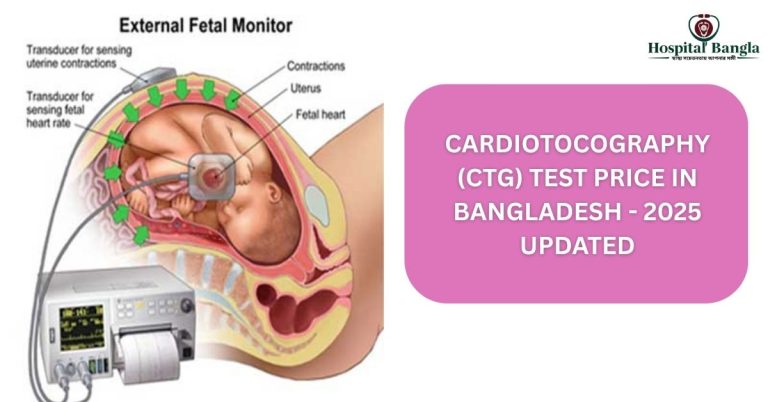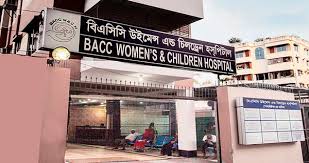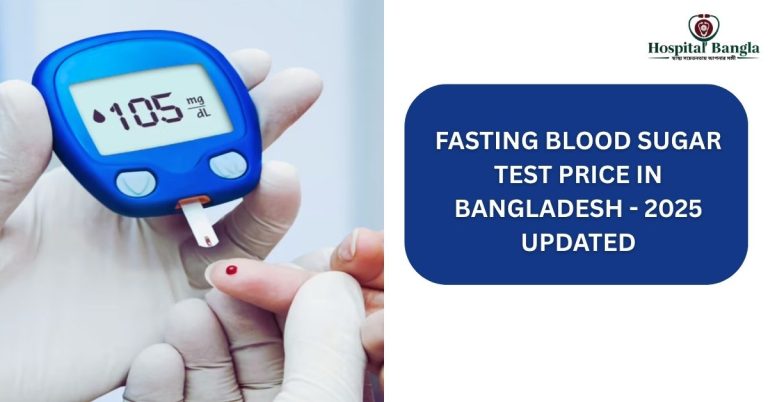USG of HBS Test in Bangladesh: 2025 Updated
The USG of the Hepatobiliary System, also known as Ultrasound of the Hepatobiliary System or USG HBS, is a non-invasive diagnostic imaging technique that uses high-frequency sound waves to create images of the liver, gallbladder, and bile ducts. This test is crucial for evaluating the health of these organs and detecting abnormalities or diseases affecting them. Patients might need this test if they experience symptoms such as abdominal pain, jaundice, unexplained weight loss, or have risk factors for liver or gallbladder diseases. In Bangladesh, the USG of HBS price in Bangladesh typically ranges from 250 BDT in government hospitals to 3000 BDT in private facilities, depending on the institution and specific package chosen. Understanding the cost and availability of this test can help patients make informed healthcare decisions.
What is a USG of Hepatobiliary System Test?
The USG of Hepatobiliary System is an ultrasound examination focused on the hepatobiliary system, which includes the liver, gallbladder, and bile ducts. A transducer emits sound waves that bounce off these internal structures, creating real-time images displayed on a screen. These images allow doctors to assess the size, shape, and texture of the organs and detect abnormalities such as tumors, gallstones, or inflammation.
Clinical Significance
- Liver: Evaluates for conditions like fatty liver, cirrhosis, hepatitis, or tumors.
- Gallbladder: Detects gallstones, cholecystitis (inflammation), or polyps.
- Bile Ducts: Identifies obstructions or dilation, which may indicate stones or tumors.
This test is critical for diagnosing hepatobiliary conditions and is safe, painless, and radiation-free, making it suitable for all age groups, including pregnant women. Alternative names for the test include USG HBS, Ultrasound of Liver and Gallbladder, or Abdominal Ultrasound (HBS-focused).
When is a USG of Hepatobiliary System Test Recommended?
Doctors may recommend this test based on specific symptoms or medical conditions, including:
- Abdominal Pain: Particularly in the upper right quadrant, which may suggest gallstones or liver issues.
- Jaundice: Yellowing of the skin or eyes, indicating possible liver or bile duct problems.
- Abnormal Liver Function Tests: Elevated liver enzymes may prompt further investigation.
- Suspected Gallbladder Disease: To confirm gallstones, inflammation, or polyps.
- Chronic Liver Disease Monitoring: For conditions like cirrhosis or hepatitis to track progression.
- Screening for Liver Cancer: Especially in high-risk patients with chronic liver disease.
The test is used for:
- Diagnosis: Identifying the cause of symptoms.
- Screening: Detecting issues in asymptomatic patients with risk factors.
- Monitoring: Tracking the progression of known conditions.
Doctors use the results to confirm diagnoses, plan treatments, or recommend additional tests like CT scans or biopsies for further evaluation.
USG of Hepatobiliary System Test Preparation
Preparing for a USG of Hepatobiliary System test is straightforward but essential for accurate results:
- Fasting: Fast for 6-8 hours before the test to ensure the gallbladder is distended, improving visibility. Water is usually allowed.
- Medications: Inform your doctor about any medications, as some may need adjustment, though this is rare for ultrasound tests.
- Clothing: Wear loose, comfortable clothing. You may need to change into a hospital gown.
- Procedure: A technician applies a gel to your abdomen to enhance sound wave transmission. The transducer is moved over the area to capture images. The test is painless and takes 15-30 minutes.
No specific medications are known to significantly affect USG results, but always consult your doctor for personalized advice.
USG of Hepatobiliary System Test Price List in Government Hospitals in Bangladesh
Government hospitals in Bangladesh offer affordable diagnostic services, making them a popular choice for many patients. Below is a table of estimated prices for the USG of Hepatobiliary System test in major government hospitals in 2025:
| Hospital Name | Location | USG of Hepatobiliary System Test Price (BDT) | Contact Number |
|---|---|---|---|
| Bangabandhu Sheikh Mujib Medical University (BSMMU) | Shahbag, Dhaka | 300 | +8802-9551101 |
| National Institute of Neurosciences and Hospital (NINS) | Agargaon, Dhaka | 1100 | +8802-8122222 |
| Dhaka Medical College Hospital (DMCH) | Dhaka | 250 | +8802-22301420 |
| Sir Salimullah Medical College Mitford Hospital | Dhaka | 250 | +8802-22332233 |
| Shaheed Suhrawardy Medical College Hospital | Dhaka | 250 | +8802-22336677 |
| Holy Family Red Crescent Medical College Hospital | Dhaka | 250 | +8802-22338899 |
| National Institute of Cardiovascular Diseases (NICVD) | Dhaka | 250 | +8802-22339900 |
Note: Prices are approximate and based on available data or typical government hospital rates. Contact the hospitals directly to confirm current pricing, as rates may vary.
USG of Hepatobiliary System Test Price List in Private Hospitals in Bangladesh
Private hospitals and diagnostic centers in Bangladesh often provide advanced facilities and faster services, though at higher costs. Below is a table of estimated prices for the USG of Hepatobiliary System test in private facilities in 2025:
| Hospital/Diagnostic Center | Location | USG of Hepatobiliary System Test Price (BDT) | Contact Number |
|---|---|---|---|
| Popular Diagnostic Centre Ltd. | Dhanmondi, Dhaka | 2000 | +8809666787801 |
| Ibn Sina Hospital | Dhanmondi, Dhaka | 1500 (Whole Abdomen USG) | +8809666787802 |
| Labaid Diagnostics Center | Dhanmondi, Dhaka | 1800 | +8809666787803 |
| United Medical College Hospital | Gulshan, Dhaka | 1800 | +8809666787804 |
| Square Hospitals Ltd. | Panthapath, Dhaka | 2500 | +8809666787805 |
| Evercare Hospital | Bashundhara, Dhaka | 2500 | +8809666787806 |
| Apollo Hospitals Dhaka | Bashundhara, Dhaka | 3000 | +8809666787807 |
| Enam Medical College Hospital | Savar, Dhaka | 1800 | +8809666787808 |
| Anwar Khan Modern Hospital | Dhanmondi, Dhaka | 2000 | +8809666787809 |
| Japan Bangla Hospital | Mirpur, Dhaka | 2000 | +8809666787810 |
Note: Prices are approximate and may vary. Some centers may include the hepatobiliary system in a whole abdomen ultrasound. Contact the facilities for the latest pricing.
Understanding USG of Hepatobiliary System Test Results
Interpreting USG results involves assessing the appearance of the liver, gallbladder, and bile ducts:
- Normal Results:
- Liver: Smooth, uniform texture with no masses or abnormal echogenicity.
- Gallbladder: Pear-shaped, free of stones or thickening.
- Bile Ducts: Normal caliber, without dilation or obstruction.
- Abnormal Results:
- Gallstones: Bright echoes with acoustic shadowing in the gallbladder.
- Liver Lesions: Hypoechoic (darker) or hyperechoic (brighter) areas indicating cysts, tumors, or hemangiomas.
- Bile Duct Dilation: Suggests obstruction, possibly due to stones or tumors.
- Fatty Liver: Increased echogenicity compared to kidneys.
- Cirrhosis: Irregular liver surface and altered texture.
Factors Affecting Results:
- Patient Factors: Obesity or excessive bowel gas can reduce image clarity.
- Operator Skill: The technician’s experience impacts image quality.
- Equipment Quality: Advanced machines provide better resolution.
If abnormalities are found, consult a doctor immediately. Further tests like a CT scan (MSD Manuals) or biopsy may be needed for a definitive diagnosis.
Frequently Asked Questions
How accurate is the USG of Hepatobiliary System test?
The test is highly accurate for detecting gallstones and assessing liver size, with sensitivity around 89.8% for gallstones (Core EM). However, it may miss small lesions in obese patients or those with bowel gas.
How long does it take to get USG results?
Results are typically available immediately, as the test is interpreted in real-time. A written report is usually provided within a few hours.
Is the USG of Hepatobiliary System covered by insurance in Bangladesh?
Coverage varies by insurance provider. Many policies cover diagnostic imaging, but confirm with your insurer for specifics.
How often should this test be done for chronic liver conditions?
Frequency depends on the condition and doctor’s advice. Patients with cirrhosis may need regular USGs (e.g., every 6-12 months) to monitor for complications like liver cancer.
How does USG differ from a CT scan for hepatobiliary evaluation?
USG is non-invasive, radiation-free, and cheaper, ideal for initial screening. CT scans offer more detailed images but involve radiation and higher costs (MSD Manuals).
Is it safe for pregnant women?
Yes, USG is safe during pregnancy as it uses sound waves, not radiation, making it ideal for assessing maternal and fetal health (Thomson Medical).
What should I do if my results are abnormal?
Consult your doctor to discuss findings and next steps, which may include additional tests or specialist referrals. Avoid self-diagnosing based on USG images.
Conclusion
The USG of Hepatobiliary System is a vital diagnostic tool for assessing liver, gallbladder, and bile duct health, helping detect conditions like gallstones, fatty liver, or bile duct obstructions. In Bangladesh, this test is widely available, with prices ranging from 250 BDT in government hospitals to 3000 BDT in private centers, making it accessible for various budgets. Comparing prices across facilities, such as those listed on HospitalBangla.com, can help you find cost-effective options. For accurate diagnosis and personalized care, consult your healthcare provider to determine if a USG of Hepatobiliary System is right for you. Stay proactive about your health and verify the latest USG of Hepatobiliary System price in Bangladesh with hospitals for the best value.







